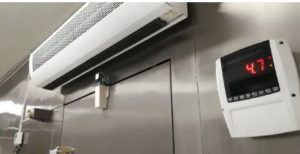The demand for industrial refrigeration in Melbourne has risen because of the need to preserve food products and medicines. Moreover, the pharmaceutical industry requires industrial refrigeration to store and transport vaccines and temperature-sensitive medications.
Energy-efficient technologies can cut electricity costs and GHG emissions. These include high-frequency sub-metering, thermal storage to offset electricity needs, and participation in grid flexibility or demand response programs. For more information about the industrial refrigeration cost in Melbourne, click here.
Cost of Compressors
 Like any piece of machinery, a compressor has an expected life span. Once it reaches that point, it needs to be replaced. Many businesses turn to OEM-affiliated sellers for replacements. However, this is often a costly step and offers no real benefit regarding quality.
Like any piece of machinery, a compressor has an expected life span. Once it reaches that point, it needs to be replaced. Many businesses turn to OEM-affiliated sellers for replacements. However, this is often a costly step and offers no real benefit regarding quality.
The global refrigeration compressor market is growing due to the rapid expansion of food manufacturing units, cold storage facilities, and warehouses. The growth of the food export business has also boosted the demand for refrigeration compressors.
Cost of Condensers
Industrial refrigeration systems are used in various industries to maintain the desired temperature of products or materials. The main component of these systems is the condenser, which is responsible for removing heat that has been absorbed by the refrigerant and releasing it into the atmosphere. There are three types of condensers: air-cooled, water-cooled, and evaporative. Each type has its unique features and benefits.
Evaporative condensers lower system condensing temperatures, reduce compressor horsepower and save up to 15% energy. They also allow for a more comprehensive operating range and are easy to install and maintain.
They are available as split or packaged systems and are generally less expensive to install than their counterparts. Aside from their low cost, evaporative condensers are eco-friendly and use natural refrigerants with very low GWP.
Cost of Evaporators
The evaporator is the main component of industrial refrigeration. It is a part of the refrigeration cycle that cools items in warehouses and large structures. The evaporator absorbs heat from the item we wish to cool and turns it into a gas. It then retraces its path back to the compressor, ready to start the cooling process again.
The market for evaporative cooling in Melbourne is growing. It has lower installation costs and is more energy-efficient than refrigerated air conditioning. Evaporative cooling also uses fewer chemicals than refrigerated systems.
Industrial refrigeration is used in a wide variety of industries, from manufacturing and innovation to food processing and agriculture. The demand for industrial refrigeration is expected to grow over the forecast period. It is due to a rise in demand for cold storage for vaccines, petrochemicals, and pharmaceuticals.
Cost of Controls
A refrigeration system is a crucial part of any business. It keeps perishable products fresh and allows you to display them in an attractive way to attract customers. However, it’s essential to keep in mind that refrigeration systems consume a lot of energy. It is especially true if you use an older model that’s not energy efficient. For more information about the industrial refrigeration cost in Melbourne, click here.
The industrial refrigeration market is expected to grow significantly due to increasing demand for cold storage of pharmaceuticals and other food products. Government initiatives to strengthen warehousing infrastructure facilities and boost cold-chain management will also fuel the market growth.
The controls sub-segment of the industrial refrigeration market is anticipated to have lucrative growth. It is primarily due to the increasing adoption of automation technologies in industrial refrigeration.
Cost of Refrigerants
The industrial refrigeration sector is Australia’s largest user of synthetic greenhouse gases and ozone-depleting substances. These substances are flammable, corrosive, and toxic. They also pose health risks when inhaled. As a result, they require special equipment and training to handle.
Refrigerant prices have recently risen. That is due to rising raw material costs and increasing global freight and distribution fees. The price increase has already led to higher installation costs for commercial refrigeration systems in Melbourne.
The global industrial refrigeration market is growing, mainly because of the increasing adoption of natural industrial refrigerants to reduce carbon footprint and environmental damage. These environmentally friendly solutions also help reduce the amount of food waste that occurs in stores.